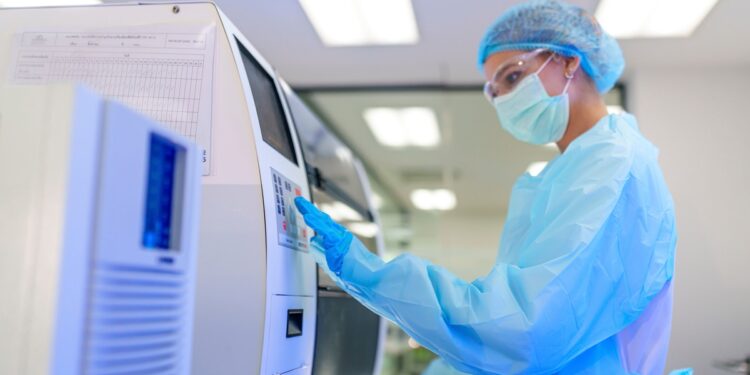Cleanliness in healthcare extends far beyond basic hygiene—it represents the critical barrier between life and death for countless patients. Sterile environments serve as the foundation of infection prevention, protecting vulnerable individuals from potentially fatal pathogens. The stakes couldn’t be higher. That’s why understanding the importance of proper sterility in saving lives is crucial for everyone in the medical field.
The Science Behind Sterility
A sterile environment eliminates all forms of microbial life, including bacteria, viruses, fungi, and spores. Healthcare facilities achieve this through multiple sterilization techniques, each targeting specific pathogen types.
Autoclaves use pressurized steam at temperatures exceeding 250°F to destroy microorganisms on surgical instruments. UV sterilizers emit germicidal ultraviolet light that damages pathogen DNA, while HEPA (High-Efficiency Particulate Air) filters capture airborne contaminants as small as 0.3 microns.
Chemical disinfectants play an equally vital role, with hospital-grade solutions containing compounds like hydrogen peroxide, chlorine dioxide, and quaternary ammonium. These agents disrupt cellular membranes and denature proteins in harmful microorganisms, rendering them inactive and unable to cause infection.
Impact on Patient Safety
Healthcare-associated infections (HAIs) affect approximately 1 in 31 hospital patients on any given day, according to the Centers for Disease Control and Prevention. Sterile environments dramatically reduce these risks by breaking the chain of transmission between pathogens and susceptible patients.
Surgical site infections, catheter-associated urinary tract infections, and ventilator-associated pneumonia represent some of the most common preventable HAIs. Methicillin-resistant Staphylococcus aureus (MRSA) and Clostridioides difficile infections, once considered inevitable complications, now occur far less frequently in facilities with rigorous sterility protocols.
Many medical facilities have found that maintaining superior environmental cleanliness results in significantly fewer infection rates compared to facilities with suboptimal practices. That means you need to learn how to clean and sterilize your anesthesia equipment, as well as any other items that patients regularly interact with.
Sterility in Different Healthcare Settings
Operating rooms maintain the highest sterility standards, featuring positive air pressure systems, specialized ventilation, and strict access controls. Surgical teams follow elaborate scrubbing protocols, don sterile gowns and gloves, and work within carefully controlled environments where every surface undergoes regular decontamination.
Intensive care units face unique challenges, housing immunocompromised patients surrounded by life-support equipment that requires frequent cleaning without disrupting critical care. Healthcare workers must balance rapid response needs with meticulous hand hygiene and equipment sterilization protocols.
Outpatient clinics, though less complex, still require comprehensive disinfection between patients, particularly for examination tables, diagnostic equipment, and frequently touched surfaces. Be sure not to overlook this area in your facility.
Challenges and Innovations in Maintaining Sterility
Human error remains the primary threat to sterile environments, whether through incomplete hand hygiene, contaminated technique, or protocol violations. Resource constraints in understaffed facilities can compromise cleaning schedules and equipment maintenance. On top of that, emerging antimicrobial-resistant pathogens continue to challenge traditional sterilization methods, requiring constant protocol updates and new technologies.
Recent innovations aid in this effort by incorporating copper-infused surfaces that naturally kill bacteria. That’s not all, though. AI-powered monitoring systems that track hand hygiene compliance and advanced plasma sterilization techniques are also effective against even the most resistant spores. Regardless of your approach to combat this issue, continuous education on how sterile environments save lives in healthcare and strict adherence to evidence-based protocols remain essential for your patients.















